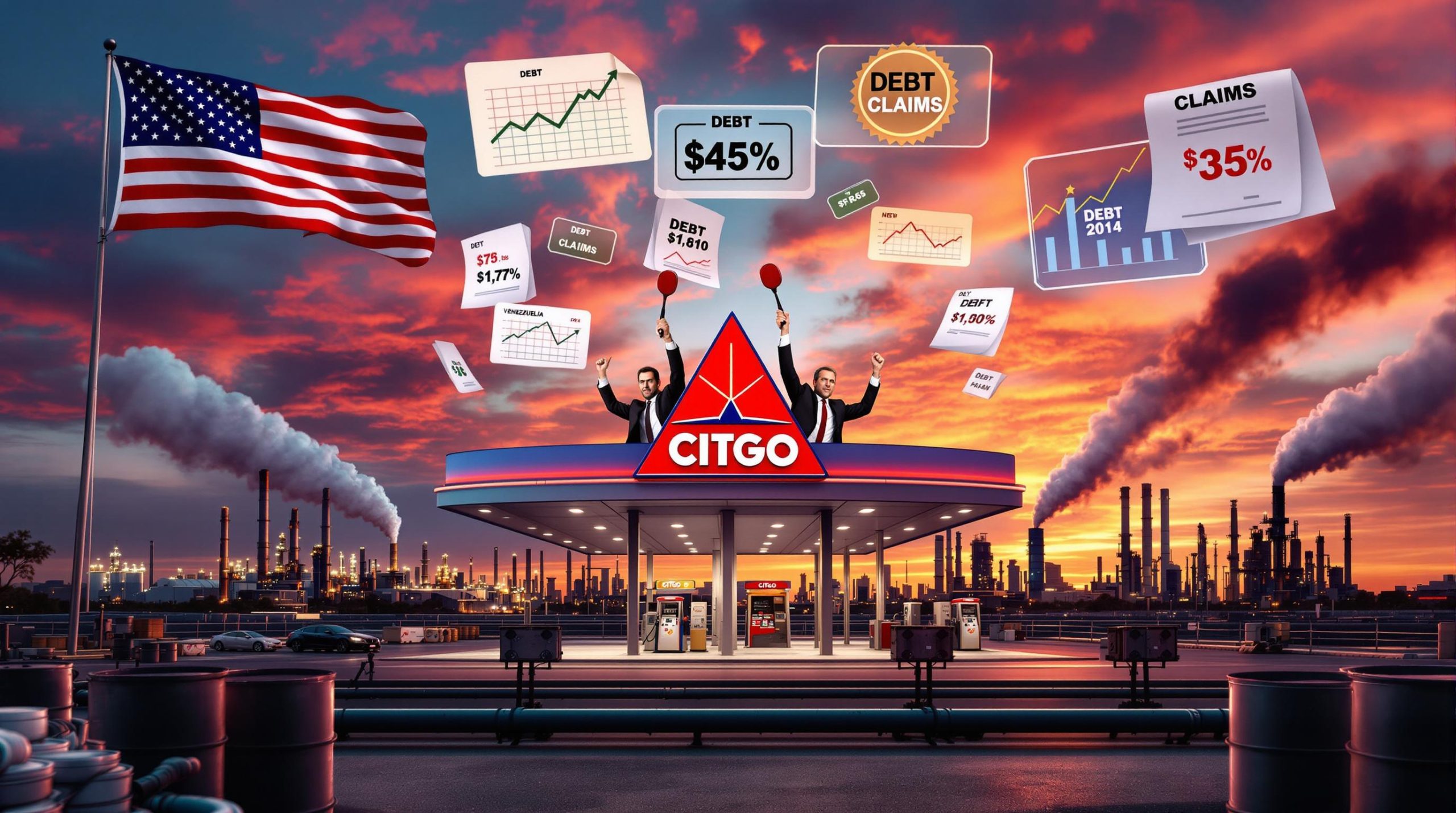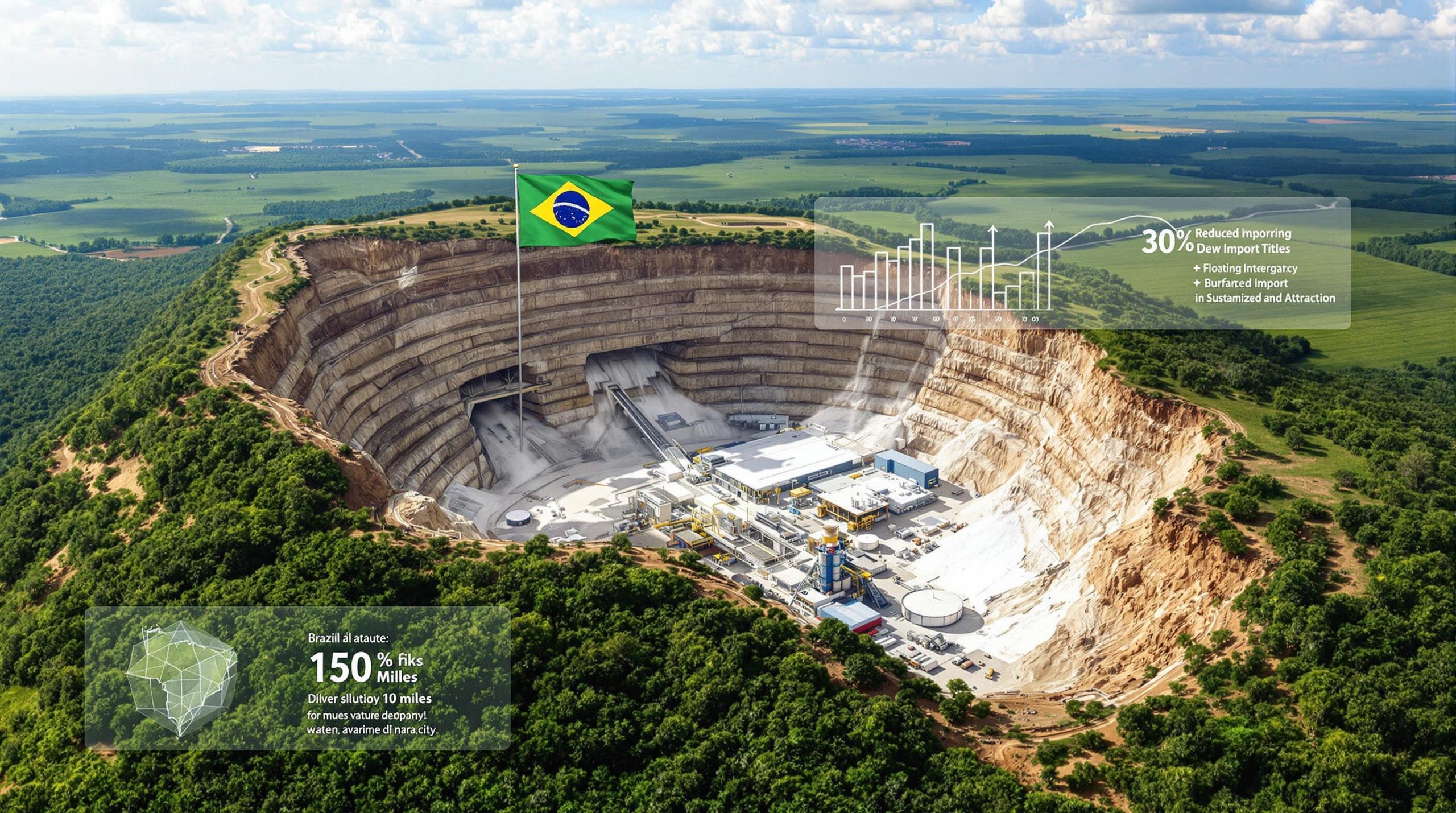Understanding the Strategic Partnership in Critical Minerals
Indonesia and the United States are forging a promising partnership in Indonesia and US discussing critical minerals trade, marking a significant shift in global supply chain dynamics. This collaboration comes at a crucial time when secure access to strategic resources has become a top priority for nations worldwide.
The partnership centers around Indonesia's vast mineral wealth and the United States' need to diversify its supply chains away from current concentrations. With technological advancement and critical minerals energy transition accelerating globally, the strategic importance of these resources cannot be overstated.
The Recent US-Indonesia Tariff Agreement
In a major diplomatic and economic breakthrough, Indonesia has become one of the select few countries to secure a preferential tariff reduction deal with Washington before the critical August 1, 2025 deadline. This agreement substantially reduces tariff rates on Indonesian products from 32% to 19%, creating an immediate competitive advantage for Indonesian exports to the American market.
This tariff impact on investments represents more than just a trade concession—it signals a deepening strategic alignment between the two nations in critical resource management. The timing is particularly significant as both countries seek to reshape supply chains for strategic minerals.
"This agreement creates a foundation for deeper cooperation in sectors vital to technological advancement and economic security," noted Indonesian officials during recent bilateral discussions.
What Are "Strategic Trade Management" Discussions?
The core of the emerging partnership focuses on what both sides refer to as "strategic trade management"—a framework designed to provide transparency and security in the movement of critical resources.
Dual-Use Commodities Under Consideration
According to Indonesian Chief Economic Minister Airlangga Hartarto, both nations are actively developing joint measures to monitor and manage the trade of strategic minerals. These discussions are particularly focused on:
- Creating robust transparency mechanisms for tracking imports and exports
- Establishing comprehensive monitoring systems for dual-function commodities
- Implementing safeguards to prevent strategic materials from reaching unauthorized parties
- Developing protocols to prevent use in terrorism or other concerning applications
The term "dual-use" refers to materials and technologies that have legitimate civilian applications but could also be utilized for military or security purposes. This designation brings additional regulatory scrutiny to ensure responsible trade practices.
Industries Affected by Strategic Minerals Management
The minerals under discussion have widespread applications across high-technology sectors that are experiencing rapid growth:
- Artificial Intelligence infrastructure (requiring specialized processors and cooling systems)
- Data center development (particularly for energy storage and processing components)
- Advanced aviation technology (lightweight, high-strength components)
- Aerospace development (specialized alloys and rare earth elements)
- Space flight technologies (heat-resistant materials and specialized electronics)
These sectors represent the frontier of technological development, making the minerals that enable them increasingly valuable from both economic and national security perspectives.
What Benefits Could Indonesia Gain?
The emerging partnership offers Indonesia multiple pathways to economic advancement beyond simple export growth.
Potential for Further Tariff Reductions
The current negotiations extend well beyond the initial tariff reduction agreement. According to statements from Minister Airlangga:
- Active discussions are underway to potentially lower tariffs to near 0% for certain strategic commodities
- These deeper reductions would likely apply specifically to resources the US cannot produce domestically in sufficient quantities
- The ongoing talks include defining precise rules of origin requirements to qualify for these preferential rates
The possible elimination of tariffs on select commodities would represent a significant competitive advantage for Indonesian producers in accessing the lucrative US market.
Investment Opportunities in Mineral Processing
Perhaps more valuable than tariff reductions are the potential investments in domestic processing capacity that could result from this partnership:
- Joint ventures in critical minerals development could bring substantial capital inflows
- Technology transfer opportunities could accelerate Indonesia's processing capabilities
- Diversification of Indonesia's mineral processing industry would reduce economic vulnerability
- Decreased dependence on single-country processing dominance would enhance Indonesia's strategic position
By developing domestic processing capabilities, Indonesia stands to capture more of the value chain rather than simply exporting raw materials—a longstanding goal of the country's economic development strategy.
How Does China Factor Into This Relationship?
The evolving US-Indonesia mineral partnership unfolds against the backdrop of China's substantial presence in global mineral processing.
Current Chinese Dominance in Indonesian Mineral Processing
China has established a commanding position in Indonesia's mineral sector over the past decade:
- Chinese companies have invested billions in Indonesia's nickel processing facilities
- Chinese firms control a significant portion of bauxite processing operations
- Chinese technical expertise has been instrumental in developing Indonesia's processing infrastructure
This established presence creates both challenges and opportunities for the new US-Indonesia partnership, as any adjustments must account for existing investments and relationships. The ongoing US‑China trade impacts continue to shape how these mineral relationships evolve.
Rules of Origin Considerations
A critical aspect of the ongoing negotiations involves determining how products with inputs from multiple countries will be classified:
- Discussions are addressing the extent to which "third party vendors" can be involved while maintaining preferential tariff status
- Specific requirements for Indonesian exports to qualify for lower US tariff rates are being established
- Potential adjustments to supply chain configurations may be necessary to maximize tariff benefits
These technical determinations will significantly impact which products receive preferential treatment and how supply chains might need to be reconfigured.
What Are the Global Implications?
The US-Indonesia partnership represents more than a bilateral arrangement—it signals broader shifts in global mineral supply chains.
Critical Minerals Supply Chain Security
This partnership exemplifies a growing trend toward strategic resource security:
- Diversification of critical mineral supply chains reduces vulnerability to disruptions
- Decreased concentration risk in strategic resource processing enhances resilience
- Enhanced transparency in mineral trade flows supports responsible sourcing practices
- Development of alternative processing pathways creates healthy competition
As nations increasingly prioritize secure access to technology-enabling minerals, partnerships like this will likely proliferate across resource-rich regions. The development of critical minerals reserves is becoming a central concern for many nations.
Strategic Competition in the Indo-Pacific
The agreement occurs within a context of intensifying focus on the Indo-Pacific region:
- Growing recognition of the strategic importance of critical mineral supply chains
- Increasing competition to secure processing capabilities and resource access
- Rising investments in alternative processing facilities across multiple countries
- Expanding networks of bilateral and multilateral resource security agreements
This partnership represents one facet of a much larger realignment of resource relationships throughout the region.
How Will This Partnership Evolve?
While the initial framework establishes important principles, several developments are anticipated as the partnership matures.
Next Steps in the Bilateral Relationship
Based on recent discussions, several key developments appear on the horizon:
- Finalization of specific monitoring mechanisms for strategic minerals
- Development of technical specifications for transparency systems
- Potential further tariff reductions for qualifying Indonesian exports
- Establishment of joint investment frameworks for processing facilities
- Implementation of agreed transparency measures for dual-use commodities
These practical next steps will transform high-level agreements into operational systems for managing strategic resource flows.
Long-term Strategic Alignment
The partnership signals several important long-term trends:
- Growing US interest in developing Southeast Asian resource partnerships
- Indonesia's strategic diversification of its mineral processing relationships
- Potential for significant technology transfer and capacity building
- Gradual reshaping of global critical mineral supply chains
Over time, this relationship could substantially alter how critical minerals move from extraction to application in high-technology industries, particularly as growing critical minerals demand continues to reshape global markets.
Industry Perspective: "The Indonesia-US critical minerals partnership represents one of the most significant realignments in strategic resource relationships we've seen in recent years. It reflects a growing recognition that mineral security underpins technological leadership in the 21st century."
FAQ: Indonesia-US Critical Minerals Collaboration
What specific minerals are considered "critical" in the Indonesia-US discussions?
While the complete list hasn't been officially published, the discussions likely center on:
- Nickel (essential for batteries and stainless steel)
- Tin (used in electronics and soldering)
- Copper (fundamental to electrical systems)
- Rare earth elements (critical for magnets and electronics)
- Bauxite (aluminum ore used in transportation and packaging)
- Cobalt (battery technology and superalloys)
These minerals are essential components in renewable energy technologies, defense systems, and advanced electronics.
How might this agreement affect global mineral prices?
The strategic management of these resources could have several effects on pricing:
- Initial implementation might create temporary market adjustments as trade patterns shift
- Long-term price stability could improve as supply chains diversify
- Processing capacity expansion could reduce bottlenecks that currently affect pricing
- More transparent trading systems could reduce price volatility caused by speculation
Market analysts suggest watching for sector-specific price movements rather than expecting uniform impacts across all commodities.
What does "strategic trade management" mean in practical terms?
This framework encompasses several practical systems:
- Digital tracking systems that monitor the movement of dual-use minerals
- Certification processes that verify responsible sourcing practices
- Regulatory mechanisms that prevent diversion to unauthorized uses
- Information sharing between partner countries about suspicious activities
- Common standards for determining acceptable end-users
These systems aim to ensure strategic resources remain in legitimate commercial channels while preventing their use in ways that could threaten security.
How does this agreement compare to similar US arrangements with other countries?
This agreement fits within a broader pattern of resource partnerships, but with distinctive characteristics:
- Similar to arrangements with Australia and Canada but focused on different mineral portfolios
- More comprehensive than arrangements with African nations which typically focus on specific minerals
- Notable for Indonesia's position as the world's largest nickel producer, giving it unique leverage
- Distinguished by its inclusion of processing capacity development, not just raw material access
Indonesia and US discussing critical minerals trade represents a significant shift that could reshape global supply chains as both countries look to secure strategic resources for future technological development.
Ready to Spot the Next Major Mineral Discovery?
Discover high-potential ASX investment opportunities as they emerge with Discovery Alert's proprietary Discovery IQ model, which instantly notifies subscribers of significant mineral discoveries across multiple commodities. Visit our dedicated discoveries page to understand how historic discoveries have generated substantial returns for early investors.




